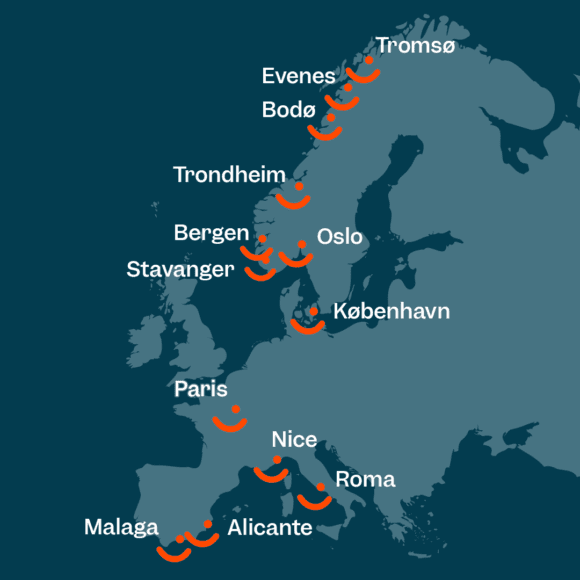
2021 10 13
Less than four months since launching services on June 30, the new Norwegian low-cost airline Flyr is already announcing a logic shift in its fleet strategy. It has signed a Letter of Intent with Air Lease Corporation (ALC) for the lease of six Boeing MAX 8s, with options on four more, as the carrier transitions from the 737-800 to the MAX. MAX makes sense for Flyr’s green credentials.
Flyr was founded in August 2020, so right in the middle of the pandemic, with the primary focus on the Norwegian domestic market before scaling up to international services. Its founder is former Norwegian Board member Erik Braathen, with many more on the management with roots there. As such, it is a direct rival to Norwegian, which was forced to reduce in size and network as it sought to reduce its heavy debts. The slimmer Norwegian relaunched in the summer of 2020 albeit on a very limited scale but has since then reported positive results.
Flyr launched on June 30 with the first service from Oslo to Tromso, followed by more domestic services to Bergen, Bode, Evenes, Stavanger, and Trondheim. Since then, Flyr is progressively building its European leisure network to include Alicante, Copenhagen, Geneva, Grenoble, Malaga, Milan, Munich, Nice, Paris, Rome, and Salzburg.
Flyr’s network in September 2021. (Flyr)
The carrier’s fleet currently exists of just four aircraft. Two 737-800s are ex-Norwegian leased from Bank of America Leasing and ORIX Aviation, while the other two are former Pegasus Boeings leased from Pembroke. The plan was to grow the fleet to six of eight aircraft by the end of 2021 and to between twelve and eighteen by the end of 2022. 2023 Would see 24 aircraft, growing to 28 in the fourth year of operations. In an information document, Flyr said last year that it has been in contact with some sixty lessors to source its aircraft.
That Flyr now transits from the 737-800 to the MAX has a lot to do with the airline’s green credentials. Flyr says it is the only airline in Norway to fully offset its carbon emissions under the European Emissions Trading System (ETS). As such, operating the MAX with its up to fourteen percent lower emissions immediately benefits the airline financially as they reduce the ETS bill. Flyr CEO Tonje Wikstrim Frislid notes that its customers have the desire to fly on the latest aircraft with lower emissions, something that other airlines also mention. The selection of the MAX has backing from the airlines’ cockpit and cabin crew unions, with which it has an agreement until March 2024.
Six MAX come from ALC’s backlog of 97
The six MAX 8s will join Flyr from early to mid-2022, with the option of the other four for delivery in 2023. The aircraft come from ALC’s backlog with Boeing, which in June included 97 MAX 7s, -8s, -9s, and -10s after canceling orders for 23 MAX.
Flyr ended the second quarter of this year with an EBIT of NOK -64.713 million or NOK -87.390 million for HY1. Revenues were just NOK 250.000 and fully reflect the start-up phase of the airline. Cash flow from operating activities was NOK -46 million. In March, Flyr raised NOK 600 million in the capital, of which NOK 515 million was available by the end of Q2. The company had NOK 76 million in short term and NOK 161 million in long-term liabilities.
Views: 0




